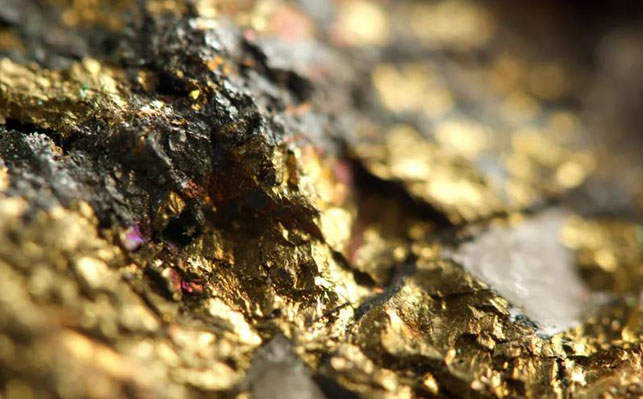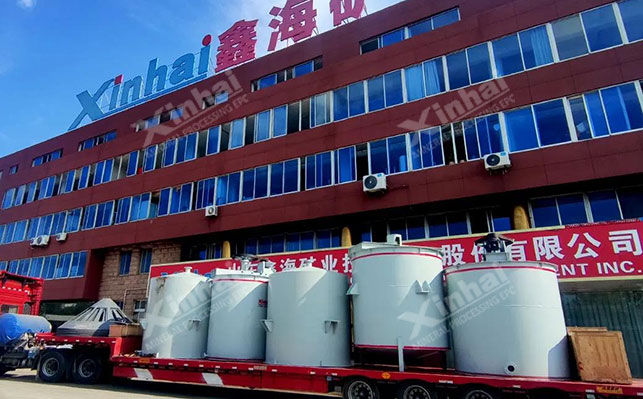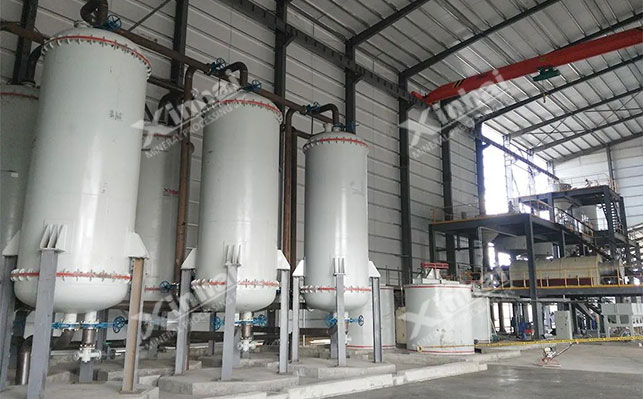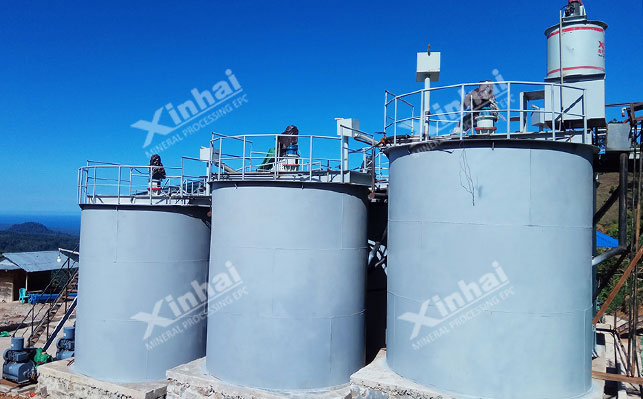Generally, gold is difficult to be oxidized directly. In nature, gold oxide has been found. It exists in areas close to the surface with severe weathering, and has undergone a long weathering process. So what is gold oxide and what are its beneficiation equipment?

Gold oxide (also known as gold trioxide Au2O3), in the form of black or dark brown powder, is sensitive to light and gradually decomposes when exposed to light. It is insoluble in water and soluble in hydrochloric acid, concentrated nitric acid, and sodium cyanide aqueous solutions. It begins to decompose at 110 ℃ and loses oxygen. It becomes gold oxide at 160 ℃ and completely decomposes into metallic gold at 250 ℃.
Gold oxide ore belongs to leachable ore, which can be directly leached into the heap. However, some gold-bearing oxide ores also need to undergo fine grinding, slurry mixing, pre-cyanidation, cyanidation and carbon leaching, filtration and desorption to obtain qualified gold minerals. The required equipment is as follows:
1. Fine grinding equipment for gold oxide ore dressing
Fine grinding refers to the grinding of gold-bearing oxidized minerals to make their ore size smaller, forcing the full decomposition of fine gold particles, and facilitating the subsequent cyanidation reaction. The equipment used for fine grinding mainly includes overflow type ball mills and hydrocyclones. In the first stage, a lattice type ball mill is used for grinding, and in the second stage, an overflow type ball mill is used to grind it to - 325 mesh, accounting for at least 85%, to completely dissociate it, in order to shorten the time for subsequent gold particles to contact cyanide.

2. Dressing and mixing equipment for oxidized gold ore
Gold oxide slurry mixing is to add water and lime to the finely ground ore powder for slurry mixing treatment to obtain gold-bearing slurry, and then use lime to adjust the pH value of the slurry to inhibit the hydrolysis of hydrides in the cyanidation process, neutralize sulfuric acid, carbonic acid, etc. produced in the cyanidation process, avoid the reaction of H and cyanide to produce HCN (hydrogen cyanide). In addition, it can also reduce the destructive effect of iron minerals on CN - (cyanide ion).
During slurry mixing, it should be noted that the amount of limestone should be determined based on the amount of gold powder. Generally, the liquid-solid weight ratio of slurry is 2-4:1, which is convenient for mixing in the process of pressurization, and can ensure that the activated carbon is suspended in the slurry, so as to facilitate the subsequent adsorption operation. The equipment required in this stage is mainly high efficiency mixing tank and conventional mixing tank.

3. Precyanidation equipment for oxidized gold ore beneficiation
The pre cyanidation treatment of gold oxide involves feeding the stirred pulp into a pressure vessel and adding sodium cyanide (reacting at a pressure of 0.6MPa to 1.0MPa). The general pre cyanidation treatment time is 0.5-2 hours to ensure the full progress of the pre cyanidation reaction; Its stirring speed is in the range of 600-1200r/min, which can promote the diffusion of CN - and oxygen in the slurry and improve the pretreatment efficiency. The equipment required in this stage is the autoclave and reagent mixing tank.
4. Cyanidation and carbon-leaching equipment for gold oxide ore dressing
The cyanidation process is to feed activated carbon (the amount of activated carbon is generally 20~40g/L) into the autoclave after pre-cyanidation for cyanidation and carbon-leaching treatment. The main purpose is to make the activated carbon absorb the complex alloy ions produced by cyanidation treatment.
When the pulp undergoes a cyanidation reaction in a closed autoclave (3-8 hours), the amount of dissolved oxygen in the pulp increases, effectively accelerating the reaction. When activated carbon is added to the pulp, the activated carbon can timely absorb the complex alloy ions leached from the pulp, reduce the concentration of complex alloy ions in the pulp, and accelerate the gold leaching reaction. The equipment required in this stage is leaching tank and carbon extractor.

5. Gold oxide beneficiation and filtration equipment
The liquid obtained after cyanide leaching needs to be further filtered to facilitate the separation of activated carbon that adsorbs complex alloy ions and the pulp after gold extraction. 30 mesh sieve can be used for filtration to separate the activated carbon adsorbing complex alloy ions from the slurry, but there are still gold ions in the slurry, which can be further processed by a thickener to obtain the supernatant and return it to the cyanide pretreatment stage, which can effectively reuse the supernatant. The equipment required in this stage includes filter screen and three-layer washing thickener.

6. Desorption equipment for gold oxide beneficiation
Gold oxide desorption is the desorption of activated carbon obtained after filtration to obtain qualified gold concentrate. It is mainly completed in the desorption column. The washed gold-carrying activated carbon is loaded into the desorption column, and then the carbon layer is immersed in the aqueous solution of sodium cyanide and sodium hydroxide. Conduct heating treatment to make the temperature reach 90 ℃~95 ℃, and within a certain time range, the gold-containing desorption solution and desorption carbon can be obtained. The equipment required in this stage is mainly a complete set of analytical electrolysis system, including desorption column, electrowinning tank, electric heater, carbon storage tank, filter, desorption liquid tank, etc.
The above describes the characteristics of gold oxide and the type of gold oxide beneficiation equipment. The equipment selection is mainly determined according to the gold oxide beneficiation process plan. Therefore, it is suggested that the gold ore should be analyzed to design a suitable gold oxide beneficiation process and improve the gold recovery efficiency.